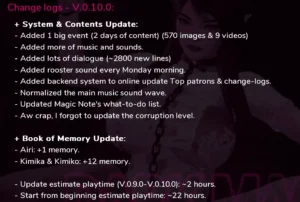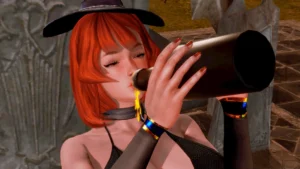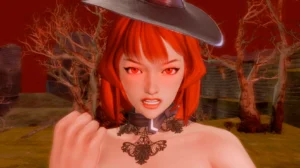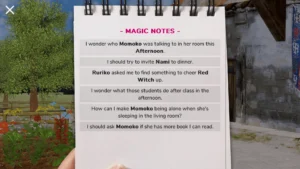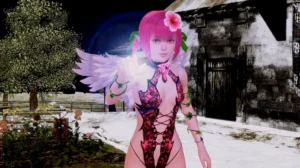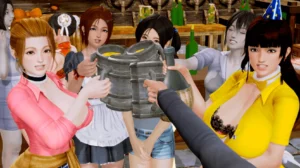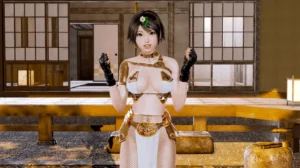
Dark Magic
Play Dark Magic
Dark Magic review
A Deep Dive into the Enchanting World of Dark Magic’s Fantasy Adventure
In the shadowy realm of mystical adventures, Dark Magic emerges as a captivating fantasy experience blending strategic gameplay with immersive storytelling. This adult-oriented title combines elemental sorcery with character-driven narratives, offering players a unique journey through enchanted landscapes. As someone who’s spent countless nights unraveling its secrets, I’ll guide you through its most compelling features while maintaining focus on gameplay mechanics and artistic design. Whether you’re curious about spellcasting systems or character progression, this analysis reveals what makes Dark Magic stand out in the fantasy gaming niche.
Core Gameplay Mechanics & Fantasy Elements
Storyline Architecture & Quest Design
Picture this: you’re staring at a dialogue option that could either save a cursed kingdom or burn it to ash. Your palms sweat. Your heartbeat syncs with the eerie soundtrack. Welcome to Dark Magic, where every choice isn’t just a plot twist—it’s a seismic shift in your 40+ hour adventure. 🌑✨ With branching narrative paths that fork into 12+ wildly different endings, this isn’t your grandma’s “good vs. evil” fairy tale.
Let me tell you about my first playthrough. I accidentally allied with a rogue necromancer because I thought his pet raven was cute (don’t ask). That one whimsical decision locked me into a storyline where villages worshipped skeletons and merchants traded in haunted artifacts. 🤯 The game doesn’t just react to your choices—it evolves around them. Quests aren’t fetch tasks; they’re moral riddles. Save a starving town by stealing magic crops, or let them starve to protect ancient druidic grounds? Either way, the world remembers.
💡 Pro tip: Talk to everyone. That grumpy bartender? He might hint at a secret rebellion. The shy librarian? She’s hiding a map to a dragon’s hoard. Missable content here is like buried treasure—dig deep!
The main campaign is structured like a spiderweb: central threads connect to smaller, player-driven stories. Finish a quest violently? Unlock brutal “blood magic” factions. Prefer diplomacy? Gain allies who’ll fight for you in boss battles. And yes, romance options exist—just don’t expect candlelit dinners when your date might hex you for picking the wrong wine. 🍷⚡
Character Customization Options
Ever spent hours tweaking a character’s eyebrow slant? Dark Magic gets you. 🧙♂️🎮 The fantasy character customization isn’t just about aesthetics (though you can give your mage a neon beard if that’s your vibe). It’s about building a hero whose skills and backstory shape the world.
Start with 6 base classes:
– Spellweaver (glass cannon mage)
– Shadowblade (stealthy assassin)
– Ironwarden (tanky shieldmaster)
– Beastcaller (creature-summoning druid)
– Pyreheart (fire-wielding berserker)
– Soulbinder (support/healer hybrid)
Each class branches into 4 subclasses at Level 10. My Ironwarden morphed into a “Stormguard”—a lightning-chucking tank who could zap enemies while blocking attacks. ⚡🛡️ Progression feels like solving a puzzle: mix skills from your subclass tree with elemental magic system perks to create unstoppable combos.
| Class | Base Health | Magic Affinity | Starting Element |
|---|---|---|---|
| Spellweaver | Low | Very High | Arcane |
| Shadowblade | Medium | Low | Darkness |
| Ironwarden | Very High | Medium | Earth |
| Beastcaller | Medium | High | Nature |
| Pyreheart | High | Medium | Fire |
| Soulbinder | Low | Very High | Light |
But here’s the kicker: your appearance changes with your choices. Cast too many dark spells? Your eyes glow crimson. Befriend forest spirits? Vines snake through your armor. It’s like the game sees your soul—and dresses you accordingly. 🌿👁️
Strategic Spellcasting System
Imagine tossing a fireball into a whirlpool you created, then watching the steam cloud blind enemies so your ally can backstab them. That’s strategic spell combinations in action. 🔥💧 With 5 elemental disciplines (Fire, Water, Earth, Air, Arcane) and 120+ spells, battles feel like chess matches with dragons.
The elemental magic system rewards creativity. Combine Water + Air to summon a freezing tornado, or Earth + Fire to rain molten rocks. My personal favorite? Using Arcane magic to “pause” an enemy’s spell mid-air, then redirecting it at their leader. 😈🌀 But beware: enemies adapt. Burn a frost troll? The next one wears fire-resistant armor.
Here’s how to dominate:
1. Layer effects: Start with crowd control (e.g., entangling roots), then hit hard with AoE spells.
2. Elemental weaknesses: Study bestiaries! Undead hate light; golems crumble under earth magic.
3. Synergy with allies: Pair a Pyreheart’s flame wall with a Spellweaver’s wind blast to create a firestorm.
Difficulty scales based on your playstyle. Go full mage? Enemies spawn with magic shields. Prefer stealth? Guards get paranoid and set traps. It’s like the game’s AI is your dungeon master—ruthless but fair.
Final Thoughts: Why This Dark Magic Gameplay Guide Matters
Whether you’re here for the branching narrative paths, the fantasy character customization, or the joy of frying foes with strategic spell combinations, Dark Magic doesn’t just hand you a story—it lets you live one. 🏰⚔️ With its elemental magic system and relationships that shape kingdoms, every playthrough feels like rewriting history. So grab your staff, sharpen your wit, and remember: in this world, even a whisper can start a war. 🔮✨
Dark Magic’s intricate blend of strategic gameplay and rich storytelling creates an unforgettable fantasy experience. From its versatile character builds to the deeply interactive spellcasting system, every element encourages creative problem-solving. While the game’s mature themes add complexity, its true strength lies in the seamless integration of magical combat with narrative consequences. Ready to test your mystical prowess? Begin your journey by experimenting with elemental combinations in the prologue chapter – your choices here will shape the entire adventure.

